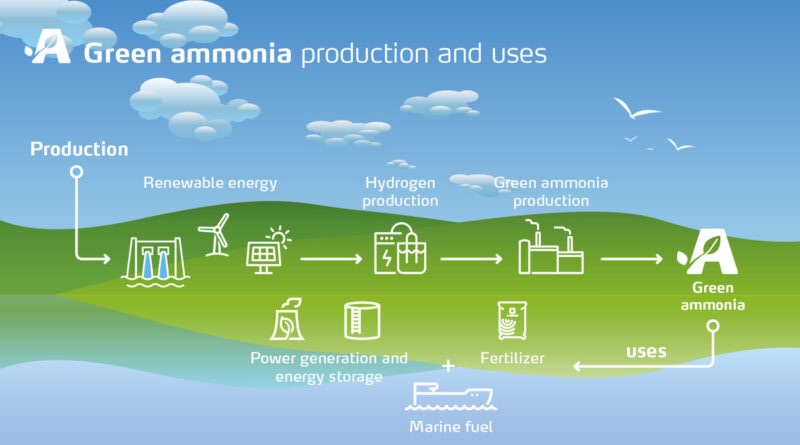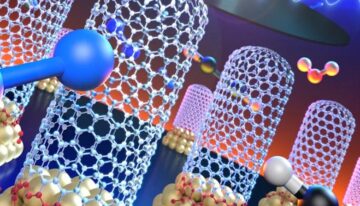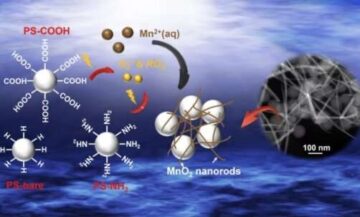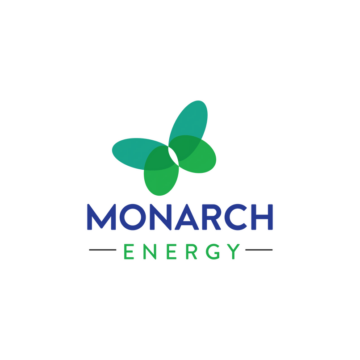
Image: Green ammonia production from green hydrogen courtesy of World Economic Forum.
The debate over green hydrogen continues, but the flow, the deluge of BILLIONS of DOLLARS into new and larger GH projects, solidifies the path to Commercialization for both large and small applications.
In the latest news, the Saudi-listed desalination powerhouse ACWA Power has just added another notch in its green hydrogen belt, aimed at scaling up to produce 2 million metric tonnes per year of…green ammonia?!?
From Green Hydrogen To Green Ammonia
Green hydrogen is an emerging player on the global energy and chemical stage, mainly produced from water in electrolysis systems. To complete the green circle, the electrolyzers run on renewable energy.
Other renewable resources for hydrogen include biomass and wastewater, but for now most of the investor dollars are flowing into water electrolysis (see lots more CleanTechnica coverage here).
Criticism regarding the use of hydrogen often surfaces in relation to fuel cell electric vehicles.
However, transportation is just the tip of the hydrogen iceberg. Hydrogen is a ubiquitous element that greases the gears of modern industrialized economies and the global food supply, too.
In terms of transitioning out of fossil fuels, hydrogen has a big target on its back because almost all of the global hydrogen supply is extracted from natural gas, with coal filling in the rest. Cleaning up the supply chain would not just help decarbonize fuel cell vehicles.
It would also carve a big chunk of carbon out of the food processing and chemical industries among others, including ammonia fertilizer.
The US Energy Information Agency also points out that hydrogen is active in the energy storage and biodiesel industries as well as fossil fuel refining.
The ammonia fertilizer angle is especially interesting because ammonia — chemical symbol NH3 — is mostly made of hydrogen.
Sourcing ambient nitrogen from the air completes the sustainability picture. There is also talk of using ammonia as a transportation medium for hydrogen, though the challenge is to retrieve the hydrogen at the destination point.
Green Hydrogen: The Big Picture
Green hydrogen is an important factor in the Biden administration’s decarbonization efforts, and other nations are also racing ahead with supersized projects.
That brings us to Egypt, where ACWA Power has just announced the latest addition to its hydrogen portfolio. Said to be worth more than $4 billion USD, the new green hydrogen project aims at a potential output of 2 million tonnes of green ammonia per year.
The new project will begin with a Phase I step of 600,000 tonnes per year, building on an MOU signed last year between ACWA and four Egyptian stakeholder entities:
◦ the Sovereign Fund of Egypt,
◦ the Suez Canal Economic Zone,
◦ the Egyptian Electricity Transmission Company, and the
◦ New and Renewable Energy Authority.
Other large-scale green hydrogen projects under the ACWA umbrella include the NEOM Green Hydrogen Project in Saudi Arabia, expected to produce 1.2 million tonnes of green ammonia yearly, along with projects in the pipeline for Uzbekistan, Jordan, and Indonesia.

The Small Picture
All these big numbers are impressive, but fans of green hydrogen are also excited about the potential for green hydrogen to be produced at much smaller scales, taking advantage of distributed renewable energy resources.
In particular, the US Department of Energy has been pitching wind turbines to US farmers.
Looking forward a step or two, farmers that don’t particularly need a lot of electricity could still squeeze some value out of a wind turbine by using it to run a small-scale electrolyzer.
Depending on the farmer’s needs, green hydrogen from the electrolysis system could be used for fuel or ammonia fertilizer on site, or it could be sold as a new revenue stream.
The wheels are already in motion for small scale, decentralized hydrogen production, thanks in part to fuel cell vehicle stakeholders.
Toyota is one example, having launched a project to introduce small-scale hydrogen production systems at 7-11 stores in Japan.
Here in the US, the company IVYS has developed a modular electrolyzer that fits in a parking space. In an interesting twist, the Extreme E racing circuit has also deployed electrolysis systems to power off-grid EV charging stations.
The Transportation Connection
Circling back around to the transportation question for green hydrogen, that’s a good question. Small-scale electrolysis systems for on-site hydrogen use are part of the transportation solution.
Green hydrogen stakeholders are also eager to leverage existing gas pipelines for large-scale hydrogen distribution.
Green ammonia is also under consideration, because it is more economical and efficient to transport than hydrogen alone.
Once the ammonia reaches its destination, though, separating out the hydrogen adds cost and complexity to the endeavor.

Because science loves a challenge, solutions are already beginning to emerge. Among those hammering away at the problem is the Colorado School of Mines.
In 2018 the school won a five-year, $2.2 million award from the US Department of Energy to come up with an economical ammonia production and cracking solution.
If all goes according to plan, the impact on the green hydrogen market could be, well, impactful.
The award comes through ARPA-E, the Energy Department office tasked with supporting high risk, high reward energy innovations. “Ammonia is the world’s highest-volume commodity chemical due to its use as a fertilizer to sustain rapidly growing population.” ARPA-E explains.
“Its synthesis consumes one-half of global hydrogen production, requires more energy, and emits more carbon dioxide than any other commodity chemical,” they add.
Beyond Haber-Bosch
Under the terms of the award, the School of Mines is tasked with developing a more economical and energy efficient alternative to the high pressure – high temperature process deployed in conventional Haber-Bosch ammonia production systems.
A corollary process that renders hydrogen out of ammonia is also part of the effort.
“The team is developing a novel type of porous crystalline membranes for selective ammonia separation, which would allow the reaction to proceed beyond conventional equilibrium limits and lower operating pressures,” the School of Mines explains. “By integrating synthesis and purification steps into a single unit operation, it is expected to be more energy efficient, as well.”
The new membrane reactor can be used “at a much smaller scale,” than Haber-Bosch systems, the school adds.
It would help create new opportunities for small scale, decentralized green hydrogen production, using ammonia instead of electrolysis systems.
“With a large distribution infrastructure in place, ammonia can be efficiently shipped, and then when you need hydrogen, just decompose it,”explains lead researcher Colin Wolden.
The project timeline concludes in November 2024. CleanTechnica is reaching out to the school for an update, so stay tuned for more on that.

Reposted from @tinamcasey on Bluesky
- SEO Powered Content & PR Distribution. Get Amplified Today.
- PlatoData.Network Vertical Generative Ai. Empower Yourself. Access Here.
- PlatoAiStream. Web3 Intelligence. Knowledge Amplified. Access Here.
- PlatoESG. Carbon, CleanTech, Energy, Environment, Solar, Waste Management. Access Here.
- PlatoHealth. Biotech and Clinical Trials Intelligence. Access Here.
- Source: https://genesisnanotech.wordpress.com/2023/12/27/green-hydrogen-with-green-ammonia-twist-4-billion-usd-in-investment-support-solidifies-path-to-large-and-small-gh-commercialization/
- :has
- :is
- :not
- :where
- $UP
- 000
- 1
- 2000
- 2018
- 2024
- a
- About
- According
- add
- added
- addition
- Adds
- ADvantage
- agency
- ahead
- aimed
- aims
- AIR
- All
- allow
- almost
- alone
- along
- already
- also
- alternative
- Ambient
- Ammonia
- among
- an
- and
- announced
- Another
- any
- applications
- ARE
- around
- AS
- At
- authority
- award
- away
- back
- BE
- because
- been
- begin
- Beginning
- between
- Beyond
- biden
- Big
- Billion
- billions
- both
- Brings
- Building
- but
- by
- CAN
- carbon
- carbon dioxide
- cell
- chain
- challenge
- charging
- charging stations
- chemical
- Circle
- Cleaning
- CO
- Coal
- Colorado
- come
- comes
- commercialization
- commodity
- company
- complete
- Completes
- complexity
- concludes
- consideration
- continues
- conventional
- Cost
- could
- coverage
- cracking
- create
- debate
- decarbonize
- decentralized
- Department
- Department of Energy
- deployed
- destination
- developed
- developing
- Display
- distribution
- dollars
- Dont
- due
- e
- eager
- Economic
- Economic Forum
- economies
- efficient
- efficiently
- effort
- Egypt
- EIA
- Electric
- electricity
- element
- emerge
- emerging
- endeavor
- energy
- entities
- Equilibrium
- especially
- EV
- example
- excited
- existing
- expected
- Explains
- extreme
- factor
- fans
- farmers
- fertilizer
- Files
- filling
- flow
- Flowing
- food
- food supply
- For
- Forum
- Forward
- fossil
- Fossil fuel
- fossil fuels
- four
- from
- Fuel
- fuels
- fund
- GAS
- gears
- Global
- Goes
- good
- Green
- Growing
- having
- help
- High
- HTTPS
- hydrogen
- i
- Impact
- impactful
- important
- impressive
- in
- include
- Including
- Indonesia
- industries
- information
- Infrastructure
- innovations
- instead
- Integrating
- interesting
- into
- introduce
- investment
- investor
- IT
- ITS
- Japan
- Jordan
- jpg
- just
- large
- large-scale
- larger
- Last
- Last Year
- latest
- Latest News
- launched
- lead
- Leverage
- limits
- Lot
- lots
- loves
- lower
- made
- mainly
- Market
- max-width
- medium
- metric
- million
- mines
- Modern
- modular
- more
- most
- mostly
- motion
- MOU
- much
- Nations
- Natural
- Natural Gas
- Need
- needs
- New
- news
- None
- novel
- now
- numbers
- of
- often
- on
- ONE
- operating
- operation
- opportunities
- or
- Other
- Others
- out
- output
- over
- parking
- part
- particular
- particularly
- path
- per
- phase
- PHP
- picture
- pipeline
- pitching
- Place
- plan
- plato
- Plato Data Intelligence
- PlatoData
- player
- Point
- points
- population
- portfolio
- potential
- power
- powerhouse
- pressure
- pressures
- Problem
- proceed
- process
- processing
- produce
- Produced
- Production
- project
- projects
- question
- racing
- rapidly
- Reaches
- reaching
- reaction
- reactor
- refining
- regarding
- relation
- renders
- Renewable
- renewable energy
- requires
- researcher
- Resources
- REST
- revenue
- Reward
- Risk
- Run
- Said
- Saudi
- Scale
- scales
- scaling
- School
- Science
- see
- selective
- separating
- shipped
- signed
- single
- site
- small
- smaller
- So
- sold
- solidifies
- solution
- Solutions
- some
- sovereign
- Space
- Squeeze
- Stage
- stakeholder
- stakeholders
- Stations
- stay
- Step
- Steps
- Still
- storage
- stores
- stream
- supply
- supply chain
- support
- Supporting
- Sustainability
- symbol
- synthesis
- system
- Systems
- taking
- Talk
- Target
- team
- terms
- than
- thanks
- that
- The
- then
- There.
- These
- they
- those
- though?
- Through
- timeline
- tip
- to
- too
- toyota
- transitioning
- transport
- transportation
- tuned
- turbine
- twist
- two
- type
- ubiquitous
- umbrella
- under
- unit
- Update
- us
- USD
- use
- used
- using
- value
- vehicle
- Vehicles
- Water
- WELL
- which
- will
- wind
- wind turbine
- with
- Won
- WordPress
- world
- World Economic Forum
- world’s
- would
- year
- yearly
- you
- zephyrnet









